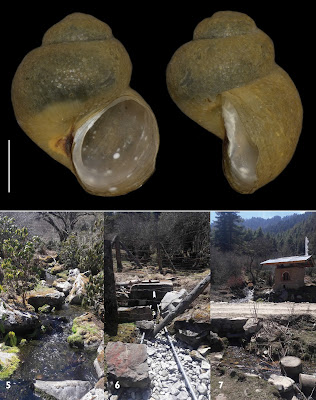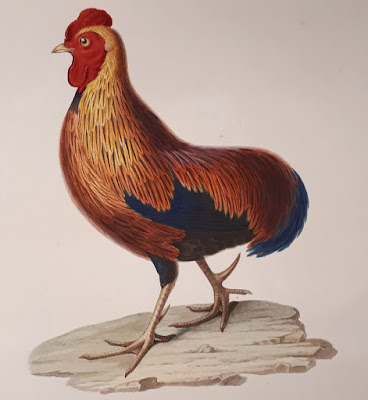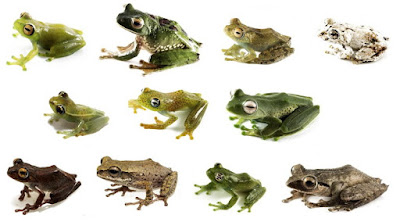[Most Recent Entries] [Calendar View]
Saturday, June 23rd, 2018
| Time | Event | ||||
| 8:44a | [Mollusca • 2017] Erhaia wangchuki • Erhaia Davis & Kuo (Gastropoda, Rissooidea, Amnicolidae) also in Bhutan
Abstract The occurrence of at least one species of Erhaia in Bhutan, viz. Erhaia wangchuki sp. n., is confirmed by DNA sequencing. A second unnamed species from Bhutan, that might be congeneric, is known from only a single shell. According to the molecular analysis, E. wangchuki is most closely related to a still undescribed Erhaia species from China. These two species together with E. jianouensis and Akiyoshia kobayashii, both also from China, form a well supported clade. Awaiting additional molecular data, the apparent inconsistency regarding Erhaia versus Akiyoshia is not dealt with here. The extant true sister species of E. wangchuki could be among the four SE Himalayan species from Bhutan and Nepal that are classified with Erhaia on the basis of conchological data only. Keywords: Erhaia, Akiyoshia, 16S, taxonomy, distribution, Nepal, Bhutan Systematics Superfamilia Rissooidea Gray, 1847 Family Amnicolidae Tryon, 1863 Genus Erhaia Davis & Kuo, 1985 Type species: Erhaia daliensis Davis & Kuo, in Davis, Kuo, Hoagland, Chen, Yang and Chen, 1985. Erhaia wangchuki sp. n. Etymology: wangchuki, after Jigme Wangchuk, who discovered these minute snails. .... Edmund Gittenberger, Sherub Sherub and Björn Stelbrink. 2017. Erhaia Davis & Kuo (Gastropoda, Rissooidea, Amnicolidae) also in Bhutan. ZooKeys. 679: 21-28. DOI: 10.3897/zookeys.679.13326 | ||||
| 9:43a | [Botany • 2017] Fimbristylis fusiformis (Cyperaceae) • Taxonomy and Phylogenetic Position of A New Species from Thailand
Fimbristylis fusiformis, an unusual new species of Cyperaceae from Thailand, is described and illustrated. This taxon has a single terminal spikelet per culm with a semi-distichous glume arrangement, bisexual flowers that lack perianth parts, and pistil with persistent style whose base is slightly swollen and trigonous nutlets with pubescent ribs. Phylogenetic reconstruction using ITS sequence data places this taxon in Abildgaardieae and sister to the rest of Fimbristylis. The species has a conservation status of Least Concern (LC). Keywords: Conservation Status; Fimbristylis; Phylogeny; Taxonomy
Fimbristylis fusiformis Wangwasit & D.A.Simpson, sp. nov. Superficially similar to F. pauciflora R.Br. but distinguished by the glumes 6.5–8.5 mm long (vs 2.5–3 mm long in F. pauciflora), nutlets fusiform, fimbriate at apex and base, with 3 longitudinal costae (vs nutlets obovate and glabrous in F. pauciflora). — Type: K. Wangwasit 080927-17 (holo K; iso BK, KKU), Thailand, Ubon Ratchathani, Pha Taem National Park, 27 Sept. 2008. Etymology. Named after the shape of the nutlets. K. Wangwasit, A.M. Muasya, P. Chantaranothai and D.A. Simpson. 2017. Taxonomy and Phylogenetic Position of Fimbristylis fusiformis, A New Species of Cyperaceae from Thailand. Blumea - Biodiversity, Evolution and Biogeography of Plants. 62(1); 47-52. DOI: 10.3767/000651917X695209 repository.naturalis.nl/document/645595 | ||||
| 11:32a | [Ornithology • 2017] On Temminck’s Tailless Ceylon Junglefowl, Gallus ecaudatus, and How Darwin denied their Existence
Summary Ceylon Junglefowl was described in 1807 by the Dutch ornithologist Coenraad Jacob Temminck. The specimens he examined were tailless (‘rumpless’) and therefore he named them Gallus ecaudatus. In 1831 the French naturalist René Primevère Lesson described a Ceylon Junglefowl with a tail as Gallus lafayetii (= lafayetii), apparently unaware of Temminck’s ecaudatus. Subsequently, ecaudatus and lafayetii were realised to be the same species, of which G. stanleyi and G. lineatus are junior synonyms. However, Charles Darwin tried to disprove the existence of wild tailless junglefowl on Ceylon in favour of his theory on the origin of the domestic chicken. ‘The tailless cock inhabits the immense forests of the island of Ceylon’ (Temminck 1813: 268). ‘… but this statement [tailless fowls are wild in Ceylon] … is uterly false’ (Darwin 1868: 259). Hein van Grouw, Wim Dekkers and Kees Rookmaaker. 2017. On Temminck’s Tailless Ceylon Junglefowl, and How Darwin denied their Existence. Bull. B.O.C. 137(4); 261-271 | ||||
| 6:30p | [Herpetology • 2018] Molecular Phylogeny and Diversification of Malagasy Bright-eyed Tree Frogs (Mantellidae: Boophis)
Highlights • We estimated the first multi-locus phylogeny of Boophis frogs. • Found that the B. ulftunni group was nested within the B. majori group. • We erect the new B. blommersae group, composed of small, brown stream breeding frogs. • We illustrate examples of correlated and repeated evolution in coloration and ventral transparency. • Boophis diversified within the Eastern highland forests of Madagascar. • Adaptation to these highland areas was important in their diversification. Abstract We investigate the molecular phylogeny of Boophis, a group of arboreal frogs from the Malagasy-Comoroan family Mantellidae. Based on newly acquired DNA sequences of five mitochondrial and five nuclear markers (7444 base pairs), we infer a phylogeny of Boophis with complete species-level taxon sampling. We reconstruct the phylogeny using Bayesian inference and maximum likelihood and estimate divergence dates for the major clades of the genus. The phylogenetic analyses together support the monophyly of the two subgenera (Sahona and Boophis), and provide strong support for most previously identified species groups, except that the B. ulftunni group is nested within the B. majori group. We also erect a new species group related to the B. mandraka group, the B. blommersae group, composed of small-sized, brown stream-breeding frogs previously included within the B. majori group. Finally, we use the resulting phylogeny to illustrate striking examples of repeated evolution of coloration and ventral transparency and address the biogeographic history and broad pattern of species diversification in the genus. Ancestral area reconstructions provide evidence that Boophis diversified within the Eastern highland forests of Madagascar, and we suggest that adaptation to these highland areas was important in their diversification. Keywords: Amphibia; Anura; Biogeography; Dispersal; Madagascar; Phylogeny Carl R. Hutter, Shea M. Lambert, Zo F. Andriampenomanana, Frank Glaw and Miguel Vences. 2018. Molecular Phylogeny and Diversification of Malagasy Bright-eyed Tree Frogs (Mantellidae: Boophis). Molecular Phylogenetics and Evolution. In Press. DOI: 10.1016/j.ympev.2018.05.027 |
| << Previous Day |
2018/06/23 [Calendar] |
Next Day >> |










